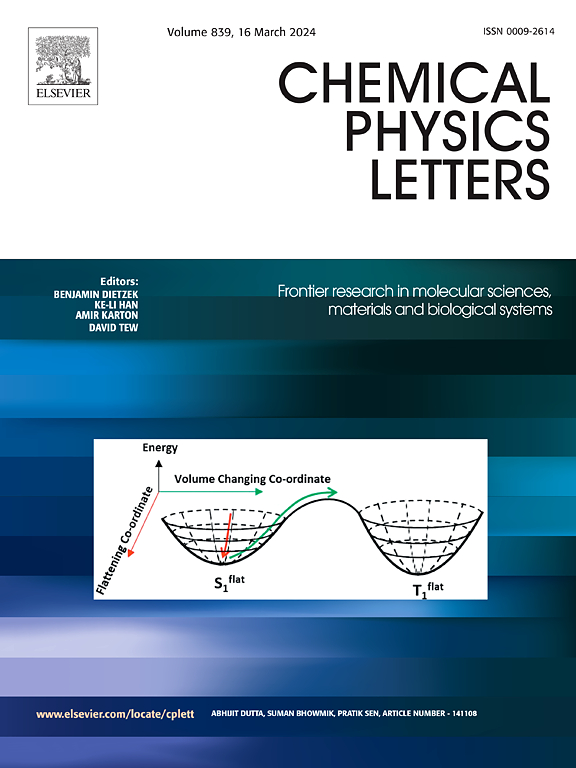基于原子力显微镜纳米压痕的厚度对Ni-Mn-Ga薄膜伪弹性行为影响的研究
IF 2.8
3区 化学
Q3 CHEMISTRY, PHYSICAL
引用次数: 0
摘要
近年来,Ni-Mn-Ga形状记忆合金(sma)薄膜及其近化学计量结构在下一代MEMS技术中的应用引起了人们的兴趣。薄膜恢复应力引起的应变能和总应变的能力是评估其在这些技术中的应用潜力的关键。然而,这些性能还没有在这类合金中得到广泛的探索,特别是在纳米尺度上。在这项工作中,我们报告了原子力显微镜(AFM)辅助纳米压痕技术在近化学计量Ni2MnGa薄膜的纳米尺度上的这些方面的研究。采用直流磁控溅射技术在MgO(001)单晶衬底上制备了厚度分别为100、250和500 [nm]的薄膜。结果表明,薄膜具有较高的应力应变能恢复能力(>;占总应变能的70%),对于相对较高的压痕深度(>;0.3 t)。在一定的薄膜尺寸和压痕深度条件下观察到伪弹性效应,这可以通过与薄膜厚度相当的最大应变几乎没有机械滞后(塑性应变)来证明。这种行为与相当大的应变能耗散一起观察到,表明由于应力诱导的马氏体转变而出现了伪弹性响应。我们的研究结果表明,伪弹性行为强烈依赖于薄膜厚度,这似乎涉及基体诱导硬化效应和体马氏体相变之间的竞争。本文章由计算机程序翻译,如有差异,请以英文原文为准。
AFM nanoindentation-based study of thickness effects on the pseudoelastic behavior of Ni-Mn-Ga thin films
In freestanding form or attached to the substrate, Ni-Mn-Ga Shape Memory Alloys (SMAs) thin films and their near-stoichiometric configurations have attracted interest in recent years for applications in next-generation MEMS technologies. Thin films' capacity to recover stress-induced strain energy and total strain are critical to assess their potential for applications in these technologies. However, these capacities have not been extensively explored in this kind of alloys, especially at the nanoscale. In this work, we report a study of these aspects at the nanoscale in near-stoichiometric Ni2MnGa thin films by Atomic Force Microscopy (AFM)-assisted nanoindentation technique. Films with thickness () of 100, 250 and 500 [nm] fabricated on MgO(001) monocrystalline substrates by DC magnetron sputtering were studied. Results show that films exhibit a high capacity to recover stress-induced strain energy (> 70 % of the total strain energy) for relatively high indentation depths (> 0.3). Pseudoelasticity effects were observed under certain film size and indentation depths conditions, which was evidenced by the presence of practically no mechanical hysteresis (plastic strain) concerning maximum strains that are comparable to the films' thicknesses. This behavior was observed together with considerable strain energy dissipation, suggesting the emergence of the pseudoelastic response due to stress-induced martensitic transformation. Our results suggest that the pseudoelastic behavior is strongly dependent on the film thickness, which seems to involve a competition between substrate-induced hardening effects and bulk martensitic transformation.
求助全文
通过发布文献求助,成功后即可免费获取论文全文。
去求助
来源期刊

Chemical Physics Letters
化学-物理:原子、分子和化学物理
CiteScore
5.70
自引率
3.60%
发文量
798
审稿时长
33 days
期刊介绍:
Chemical Physics Letters has an open access mirror journal, Chemical Physics Letters: X, sharing the same aims and scope, editorial team, submission system and rigorous peer review.
Chemical Physics Letters publishes brief reports on molecules, interfaces, condensed phases, nanomaterials and nanostructures, polymers, biomolecular systems, and energy conversion and storage.
Criteria for publication are quality, urgency and impact. Further, experimental results reported in the journal have direct relevance for theory, and theoretical developments or non-routine computations relate directly to experiment. Manuscripts must satisfy these criteria and should not be minor extensions of previous work.
 求助内容:
求助内容: 应助结果提醒方式:
应助结果提醒方式:


